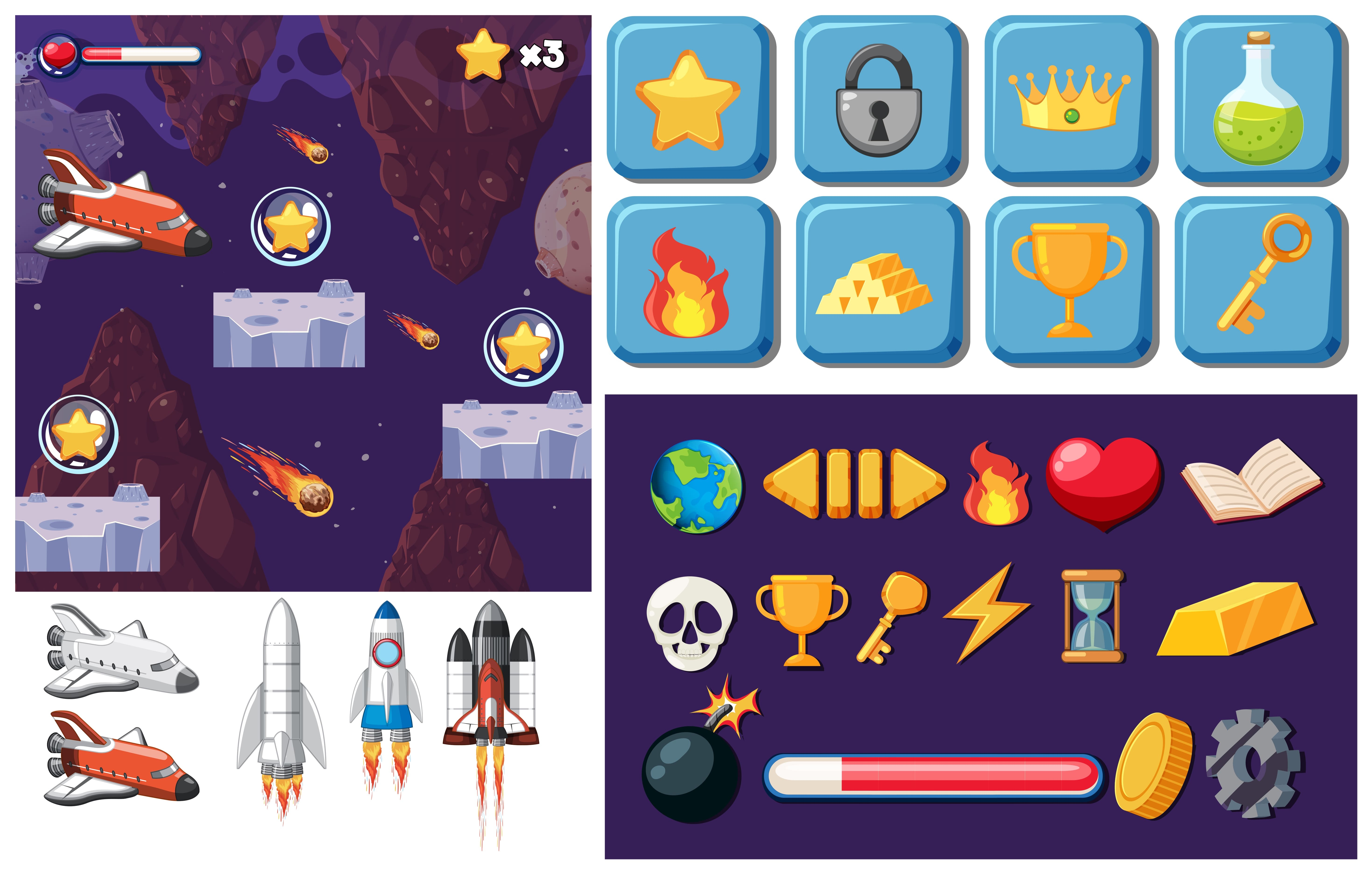Game Assets: The Building Blocks of Game Development

Game assets are essential components that bring life, creativity, and functionality to any video game. Whether you're developing a 2D platformer, an open-world 3D adventure, or a mobile puzzle game, assets play a critical role in determining the quality and experience of your game. This article explores what game assets are, the different types available, and how they are used in game development.
What Are Game Assets?
Game assets refer to the various elements that make up the visual, auditory, and interactive components of a video game. These assets are the individual pieces of content that, when combined, create the entire game world and experience. Without assets, you would only have the game code, but no images, sounds, or models to interact with.
Game assets can include:
- Textures and Sprites: Images used in 2D games or as surface details in 3D games.
- 3D Models: Objects or characters created in three-dimensional form.
- Animations: Movements of characters, objects, or environments.
- Sounds and Music: Background music, sound effects, and voiceovers that provide auditory feedback to players.
- User Interface (UI) Elements: Buttons, icons, menus, and other interactive graphics.
- Game Scripts: Pre-programmed behavior, rules, and interactions.
Types of Game Assets
Game assets are divided into different categories based on their type and function:
1. 2D Assets
2D assets are flat images used in 2D games or as overlays in 3D games. They include:
- Sprites: Single images or animations that represent characters, objects, or elements in a game.
- Textures: Patterns or images applied to 3D models to give them color and detail.
- Backgrounds: The visual elements that make up the game's environment or scenery.
2. 3D Models
3D models are objects created in three-dimensional space, and they are an essential part of modern game development. These models represent anything from characters to vehicles and buildings. Often built using specialized software like Blender, Maya, or 3ds Max, these models can be animated and placed into the game world.
3. Animations
Animations bring life to characters, objects, and environments by giving them movement. There are two primary types of animations:
- 2D Animations: Used in side-scrollers and top-down games, where characters or objects are animated frame by frame.
- 3D Animations: Involves animating 3D models by rigging (creating a skeletal structure) and defining keyframes for movement.
4. Sound Assets
Audio is a crucial part of the gaming experience, and sound assets include:
- Sound Effects (SFX): Short audio clips used for interaction feedback, such as footsteps, explosions, or item pickups.
- Music: Background tracks that set the mood and tone for the game.
- Voiceovers: Dialogue or narration that enhances storytelling.
5. User Interface (UI) Assets
UI assets are the interactive elements of the game’s user interface, such as:
- Buttons: Clickable graphics that trigger actions.
- Icons: Visual cues for items, health bars, or notifications.
- Menus: Navigation systems for in-game settings, inventory, or pause screens.
How Game Assets Are Used
Game assets are utilized throughout the entire game development process. Here's a brief look at how they're incorporated:
-
Pre-Production: During the planning stage, developers and designers outline what assets are needed, such as the number of characters, the design of the environments, and the soundscape.
-
Production: Game artists and sound designers create assets based on the project’s needs. The assets are then integrated into the game engine (like Unity or Unreal Engine), where they are further refined, tested, and adjusted for performance.
-
Post-Production: Once the game is close to completion, assets are polished for optimization, ensuring smooth performance on various platforms without sacrificing quality.
Where to Find Game Assets
For indie developers and hobbyists, purchasing or downloading free game assets can save time and resources. There are numerous websites and marketplaces where you can find high-quality assets, including:
-
Asset Stores: Online platforms like Unity Asset Store or Unreal Marketplace offer a variety of free and paid assets that are ready for use.
-
Free Game Asset Websites: Websites like AssetForFree provide a collection of free assets, including 2D sprites, 3D models, sound effects, and more. These sites are great for developers looking to cut costs without sacrificing quality.
-
Custom-Made Assets: Some developers prefer to create their assets using tools like Photoshop for 2D assets, Blender for 3D models, and Audacity for audio editing. This approach allows for complete creative control over the game’s aesthetic.
Best Practices for Managing Game Assets
Efficient management of game assets is essential for smooth development and optimal game performance. Here are a few tips:
- Organize Assets: Keep your assets well-organized in appropriate folders within your project. This makes it easier to find and manage them as the game grows.
- Compress Assets: Large assets, especially high-resolution textures and sounds, can slow down performance. Compress your assets to improve load times without losing quality.
- Optimize for Multiple Platforms: If you're developing for multiple platforms (PC, mobile, console), ensure that your assets are optimized for each platform's performance capabilities.
Conclusion
Game assets are the foundation of any video game, providing the visuals, sounds, and interactions that create a rich, immersive experience. Whether you're developing a small indie game or working on a large-scale project, understanding the different types of assets and how to manage them effectively can significantly enhance your game development process. With a variety of resources available online, from paid assets to free downloads, developers have access to countless tools that can help bring their creative visions to life.
- Industry
- Art
- Causes
- Crafts
- Dance
- Drinks
- Film
- Fitness
- Food
- Jogos
- Gardening
- Health
- Início
- Literature
- Music
- Networking
- Outro
- Party
- Religion
- Shopping
- Sports
- Theater
- Wellness
- News


